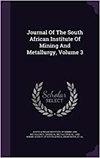Flyrock in surface mining - Limitations of current predictive models and a better alterative through modelling the aerodynamics of flyrock trajectory
IF 0.9
4区 材料科学
Q3 Materials Science
Journal of The South African Institute of Mining and Metallurgy
Pub Date : 2023-02-10
DOI:10.17159/2411-9717/1873/2022
引用次数: 0
Abstract
Historical approaches to the problem of flyrock based on correlation studies and regression analysis, including artificial neural networks and similar techniques, are inherently incapable of addressing two core issues - root causes of flyrock and projection velocity. A further shortcoming of correlation techniques is that they give no information on the influence of rock size and shape on the flight distance. The scaled depth of burial model for crater blasting in the collar zone and bench face does not specifically address the question of flyrock velocity. A third approach, based on flight trajectory calculations, often neglects the very significant effects of air resistance on the trajectory. Some trajectory models incorporate air resistance but use an implausible fragment velocity model that cannot propel sizeable rocks to distances much beyond 150 m. Nonetheless, trajectory calculation incorporating the effects of air drag affords the most promising approach to the prediction of flyrock range. A unique and insightful feature of the proposed realistic flight modelling is that it collapses all suspected causes of flyrock, many of which are not well understood, to just a single parameter - the launch velocity. This indicates that the root causes of flyrock lie in the mechanisms of momentum transfer to broken rock and suggests new avenues of study.露天采矿中的飞岩-当前预测模型的局限性和通过模拟飞岩轨迹的空气动力学的更好的替代方案
基于相关性研究和回归分析的飞岩问题的历史方法,包括人工神经网络和类似技术,本质上无法解决两个核心问题-飞岩的根本原因和投射速度。相关技术的另一个缺点是,它们不能提供岩石尺寸和形状对飞行距离的影响的信息。环缝区和台阶工作面环缝爆破埋深比例模型没有具体解决飞岩速度问题。第三种方法,基于飞行轨迹计算,往往忽略了空气阻力对轨迹的非常重要的影响。一些轨迹模型考虑了空气阻力,但使用了一个难以置信的碎片速度模型,无法将大石块推进到150米以上的距离。尽管如此,考虑空气阻力影响的轨迹计算是预测飞岩射程最有希望的方法。提出的现实飞行模型的一个独特而深刻的特点是,它将所有可能导致飞岩的原因(其中许多原因尚未得到很好的理解)归结为一个参数——发射速度。这表明飞岩的根本原因在于动量传递到破碎岩石的机制,并提出了新的研究途径。
本文章由计算机程序翻译,如有差异,请以英文原文为准。
求助全文
约1分钟内获得全文
求助全文
来源期刊
CiteScore
1.50
自引率
11.10%
发文量
61
审稿时长
4-8 weeks
期刊介绍:
The Journal serves as a medium for the publication of high quality scientific papers. This requires that the papers that are submitted for publication are properly and fairly refereed and edited. This process will maintain the high quality of the presentation of the paper and ensure that the technical content is in line with the accepted norms of scientific integrity.

 求助内容:
求助内容: 应助结果提醒方式:
应助结果提醒方式:


